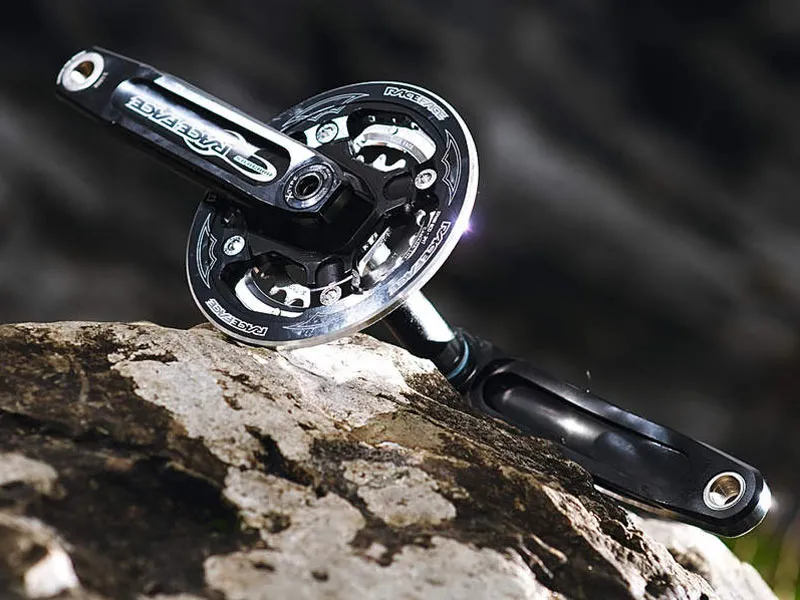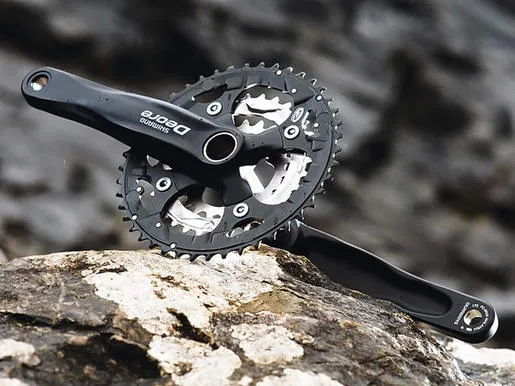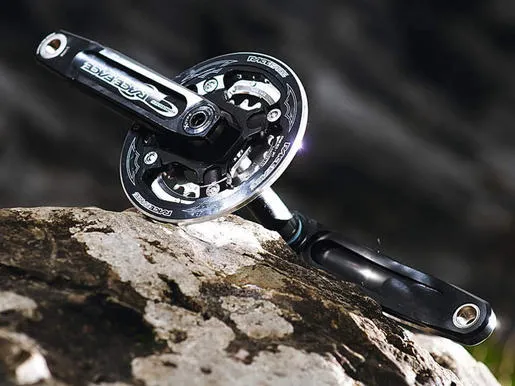Your first task is to suit the weight and strength of your next crank to your needs. If you’re a cross-country/trail rider who never damages cranks or stresses them by jumping or doing big drops, then you should be looking for a crank that saves you weight, but the lighter you go, the more carefully you’ll have to treat it.
If you’re starting to push your riding into more extreme areas and have already damaged your crank – or are worried that you soon will – go for a heavier, stronger crank. These tougher units range from midweights like the RaceFace Atlas to super-strong sets like the Diabolus and the DMR. As a general rule, the heavier you go, the less likely they are to bend or break.

The burley RaceFace Diablous
Built for abuse
In terms of material, top quality alloy cranks are relatively light for a given strength and are generally the best value. Carbon cranks are extremely stiff and just a shade lighter than alloy ones, but expensive and more likely to be damaged in a crash. Steel cranks are the toughest of all, but they’re heavy too, which makes them suitable for only the most abusive riders.
Most cranksets have now switched to external type bottom brackets, which put larger bearings outside the frame, near the end of the axle. This theoretically makes the whole crankset stiffer and stronger and gives a longer bearing life. In practice though, these external bottom brackets are exposed to more filth and often die quicker. They are getting better, though – particularly in the case of aftermarket bottom brackets – but if you’re after maximum lifespan then an old-style chainset that runs on ISIS (get an SKF bottom bracket) or an Octalink or square taper (Shimano bottom brackets rule here) axle may be a better bet for you.
Mountain bikes generally come with a triple chainset with 44, 32 and 22-tooth chainrings for maximum gear range. A chainset with just the smallest and middle rings and a protective bashguard is more suitable for crashing into things on extreme trails or street obstacles. You won’t miss the big gears on more radical technical terrain either. If you don’t mind pushing back up or relying on an uplift then a single ring and chain device offers the most secure chainring set-up. Meanwhile, big mileage (or regular bad weather) riders should also look for cranksets that come with more durable chainrings than basic alloy ones.
Jargon buster
- Axle - The tube through the frame that the arms attach to.
- Big ring - The largest, outer chainring. Normally 42 or 44 teeth.
- Ceramic bearings - Bearings using ceramic rather than steel balls and sometimes surfaces. Smoother, longer lasting and lighter, but expensive.
- Cartridge bottom bracket - A bottom bracket that contains both axle and bearings in one easily fitted tube.
- Cold forged - Hammered into shape using a press and die stamps. Toughens the grain structure.
- Granny ring - The smallest, inner ring, that doesn't have many teeth. Normally 22 or 24 teeth.
- Hollow - Crank or axle with a space in the middle to reduce weight.
- Hot forged - Shaped using melted metal that’s poured into a die and then cooled.
- Laser etched - Burnt permanently into the surface with a laser.
- Machined - Shaped with metal cutting tools to create a clean, sharp finish.
- Middle ring - The medium sized ring – normally 32 or 34, sometimes 36, teeth.
- Pedal insert - Metal reinforcement in the end of the crank arm for the pedal to thread into.
- Pin - Metal rivet used to help lift the chain up.
- Ramp - Shaped slope on side of chainring to help lift the chain up.
- Seals - The rubber covers and flaps between the bearings and the evil outside world.



